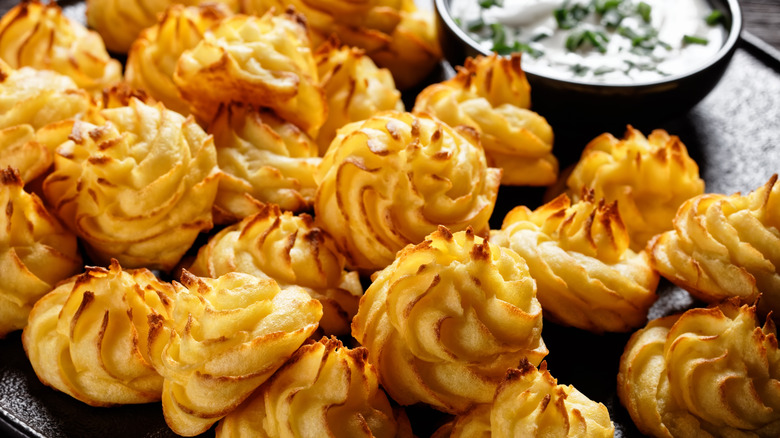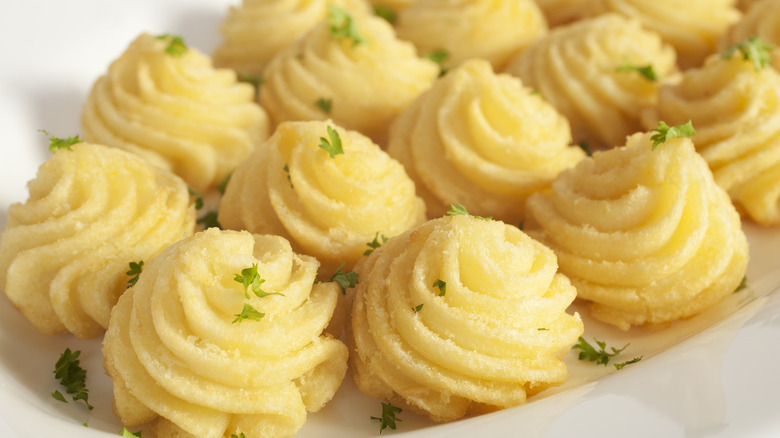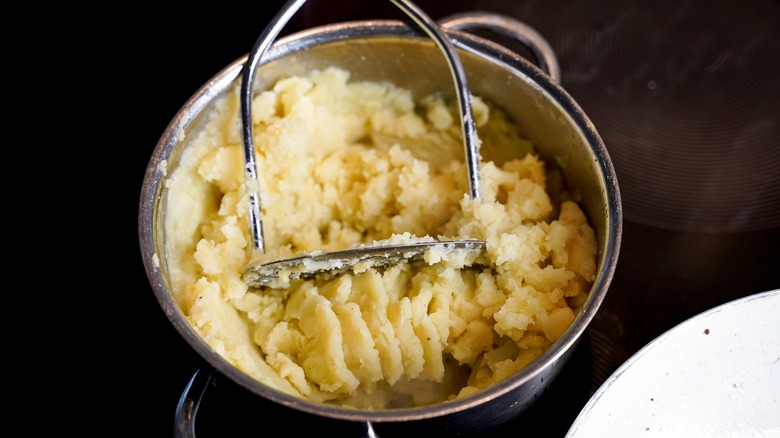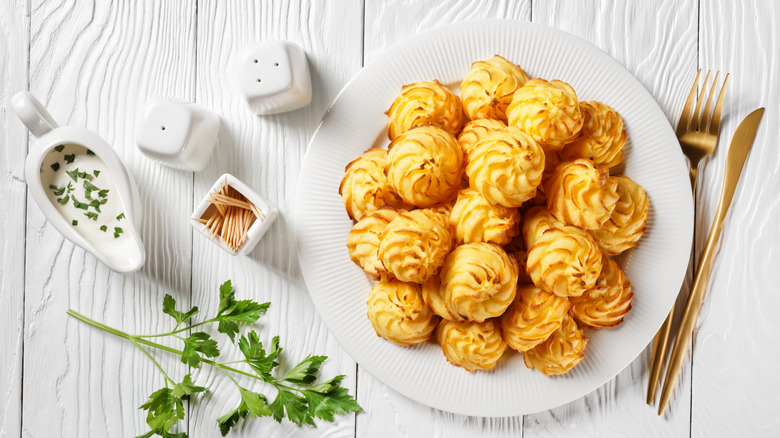Creamy, Rich Duchess Potatoes Are Worth The Extra Effort
Sometimes we all like to feel fancy. Sure, life is mostly about routine and maintenance, but occasionally we must free ourselves from the humdrum and write our fates in cursive — and it's no different with food. You may think that traditional mashed potatoes can only be trotted out in so many ways (we'll show you 13 of them!), but you could never imagine that they could be so elevated and transformed that they receive a French name: pommes duchesse. Boiled potatoes, riced and enriched with butter and egg yolks, then made sublime with nutmeg, duchess potatoes will rock up to the table like Cinderella to the ball.
Because of their intricate form, they can seem intimidating to make, but don't let that shy you away. These can be done with a little bit of practice and a few tools on hand, and they're well worth the extra steps. Not only do duchess potatoes taste glorious, they also provide an opportunity for some architectural adventures. Once you've got the hang of piping the duchess potato mash onto a baking sheet, the resulting swirled, golden brown crowns will become the stars of the show.
Spuds fit for a royal dish
The first recipe for pommes de terre a la duchesse was published in the "La Nouvelle Cuisinière Bourgeoise" in 1746. Although there was no actual royal personage who lent her name to the dish, the appellation "a la duchesse" was applied in French culinary circles to suggest grand and elegant creation consisting specifically of mashed potatoes and egg yolks.
Duchesse potatoes are meant to be piped and baked, and here is where the added egg yolks do double duty: enriching the dish and providing needed structure. Because of this — and the relative ease of making the dish — duchess potatoes quickly became known worldwide. American cooking legend and author Fannie Farmer seemed to take particular delight in the piping process.
"Shape, using a pastry bag and tube," Farmer wrote in the 1896 edition of the "Boston Cooking-School Cook Book," "in form of baskets, pyramids, crowns, leaves, roses, etc." If you're an old hand at piping out icing and meringue, duchess potatoes will provide a savory opportunity to show your stuff. Regardless, let's start with the basics.
Building a duchess from scratch
Start by boiling peeled, cubed Yukon Gold potatoes (although russets will work just fine). Once these can be easily pierced with a fork and fully cooked, drain the potatoes and return them to the empty pot to dry them out for a minute or so over low heat. Then put them through a ricer, stirring in butter and cream. To this, add one egg and two yolks, beaten. Finally, season the mixture with salt, pepper, and freshly-grated nutmeg. That's it! Now comes the (possibly) hard part.
If you want to go the traditional route, fill a piping bag with the potato mixture and hold it over a lined baking sheet at an 80-degree angle. Make a 2-to-3-inch rosette in close concentric circles; any hollow spaces will cause your duchesses to collapse. Brush the tops with a little cream (or water) and egg wash to create a lovely brown crust, then bake for 15 to 20 minutes in a hot oven. Now exult in your creation: a beautifully-shaped swirl, lightly crisp on the outside with a creamy, rich interior.
The duchess comes in many forms
We don't want to disappoint Fannie Farmer, but not everyone has a knack for elaborate piping. If you aren't ready to be quite so fancy, as to create crowns and roses, simply fill a casserole dish with about ⅔ of the potato mixture and pipe some more on top to give it an alluring finish after baking. You could even put the entire potato mixture into a casserole dish and use a fork or spatula to create a pretty exterior pattern. The dish will brown up beautifully no matter what it looks like going into the oven, and you'll soon be eating like a king — or at least a duchess.
Bear in mind that the basic duchess potato recipe can be combined with a simple choux pastry to make the deliriously good fried potato puffs known as pommes dauphine. These can be served as a lovely appetizer or side dish to a prime rib, chicken breast, or alongside a plate of honey-glazed carrots.



